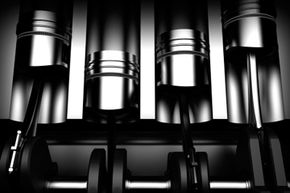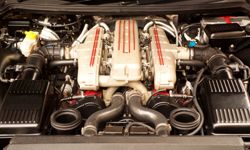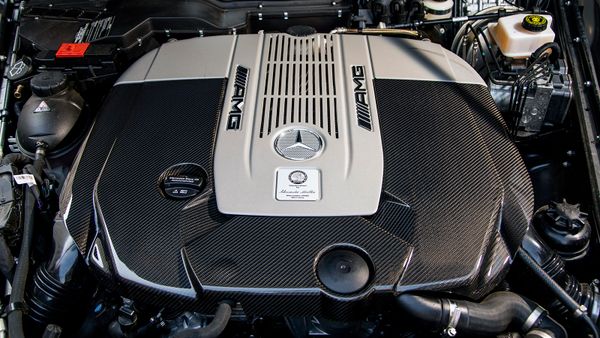Unless you're a real gear head, just seeing the phrase "positive crankcase ventilation" probably makes your head hurt, because it sounds, well, complicated. But it really isn't all that complicated. Or at least it shouldn't seem complicated after we've finished explaining it to you. But to do that, we're going to have to give you a quick refresher course in how the internal combustion engines found in most automobiles work. Okay -- one, two, three, go!
An internal combustion engine is built around a series of hollow cylinders, in each of which is a moveable piston designed to glide up and down inside it. A mixture of air and gasoline is pumped through a system of tubes called the intake manifold through each cylinder's intake valve (or valves), where a spark from a spark plug causes the mixture to explode in the open space at the top of the cylinder called the combustion chamber. The pressure from this explosion drives the piston in the cylinder downward, where it causes the crankshaft to rotate. The rotation of the crankshaft not only pushes the piston back up into the cylinder so it can do all this again, but it also turns the gears within the car's transmission that eventually make the car move. Meanwhile, the rising piston pushes the air and gas left over from the explosion back out of the cylinder through an exhaust valve.
Advertisement
However -- and this is where crankcase ventilation comes in -- a certain amount of that mixture of air and gasoline is pulled down by the piston and slips through the piston rings into the crankcase, which is the protective cover that insulates the crankshaft. This escaping gas is called blow-by and it's unavoidable. It's also undesirable because the unburned gasoline in it can gunk up the system and produce problems in the crankcase. Until the early 1960s, these blow-by gases were removed simply by letting air circulate freely through the crankcase, wafting away the gases and venting them as emissions. Then, in the early 1960s, positive crankshaft ventilation (PCV) was invented. This is now considered the beginning of automobile emission control.
Positive crankcase ventilation involves recycling these gases through a valve (called, appropriately, the PCV valve) to the intake manifold, where they're pumped back into the cylinders for another shot at combustion. It isn't always desirable to have these gases in the cylinders because they tend to be mostly air and can make the gas-air mixture in the cylinders a little too lean -- that is, too low on gasoline -- for effective combustion. So the blow-by gases should only be recycled when the car is traveling at slow speeds or idling. Fortunately, when the engine is idling the air pressure in the intake manifold is lower than the air pressure in the crankcase, and it's this lower pressure (which sometimes approaches pure vacuum) that sucks the blow-by gases through the PCV valve and back into the intake. When the engine speeds up, the air pressure in the intake manifold increases and the suction slows down, reducing the amount of blow-by gas recycled to the cylinders. This is good, because the blow-by gases aren't needed when the engine speeds up. In fact, when the car is up to speed, the pressure in the intake manifold can actually become higher than the pressure in the crankcase, potentially forcing the blow-by gases back into the crankcase. Since the whole point of positive crankcase ventilation is to keep these gases out of the crankcase, the PCV valve is designed to close off when this happens and block the backflow of gases.
Advertisement



